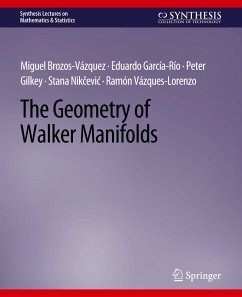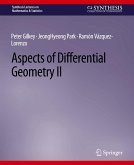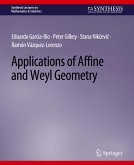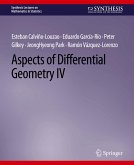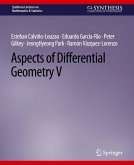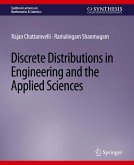This book, which focuses on the study of curvature, is an introduction to various aspects of pseudo-Riemannian geometry. We shall use Walker manifolds (pseudo-Riemannian manifolds which admit a non-trivial parallel null plane field) to exemplify some of the main differences between the geometry of Riemannian manifolds and the geometry of pseudo-Riemannian manifolds and thereby illustrate phenomena in pseudo-Riemannian geometry that are quite different from those which occur in Riemannian geometry, i.e. for indefinite as opposed to positive definite metrics. Indefinite metrics are important in many diverse physical contexts: classical cosmological models (general relativity) and string theory to name but two. Walker manifolds appear naturally in numerous physical settings and provide examples of extremal mathematical situations as will be discussed presently. To describe the geometry of a pseudo-Riemannian manifold, one must first understand the curvature of the manifold. We shallanalyze a wide variety of curvature properties and we shall derive both geometrical and topological results. Special attention will be paid to manifolds of dimension 3 as these are quite tractable. We then pass to the 4 dimensional setting as a gateway to higher dimensions. Since the book is aimed at a very general audience (and in particular to an advanced undergraduate or to a beginning graduate student), no more than a basic course in differential geometry is required in the way of background. To keep our treatment as self-contained as possible, we shall begin with two elementary chapters that provide an introduction to basic aspects of pseudo-Riemannian geometry before beginning on our study of Walker geometry. An extensive bibliography is provided for further reading. Math subject classifications : Primary: 53B20 -- (PACS: 02.40.Hw) Secondary: 32Q15, 51F25, 51P05, 53B30, 53C50, 53C80, 58A30, 83F05, 85A04 Table of Contents: Basic Algebraic Notions / Basic Geometrical Notions / Walker Structures / Three-Dimensional Lorentzian Walker Manifolds / Four-Dimensional Walker Manifolds / The Spectral Geometry of the Curvature Tensor / Hermitian Geometry / Special Walker Manifolds

